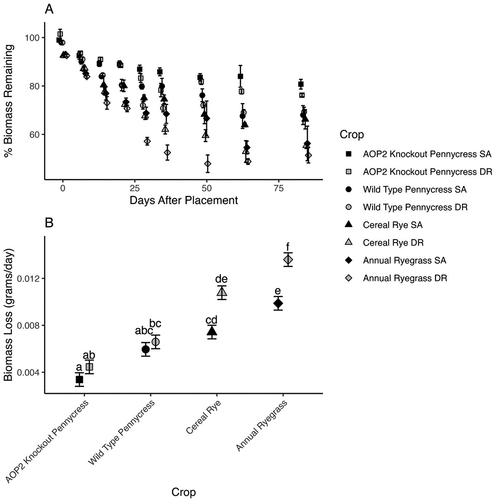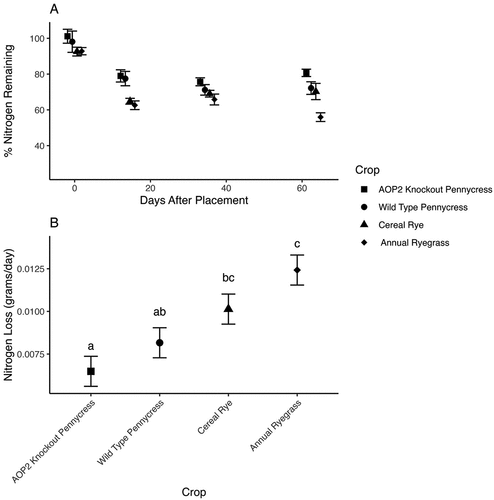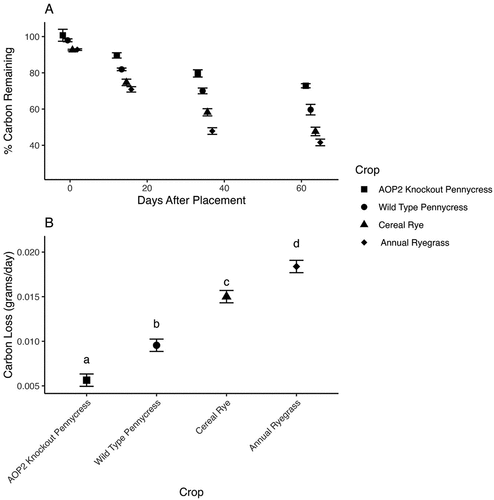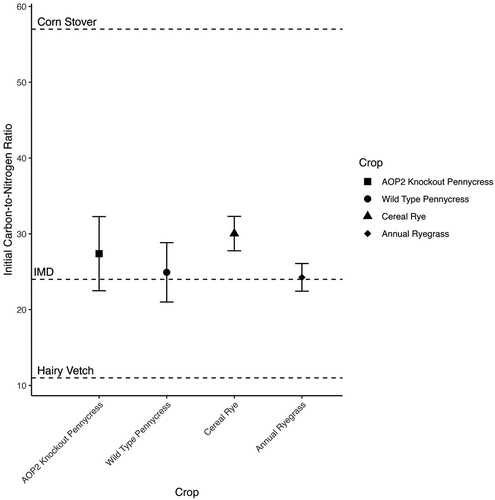Figures & data
Figure 1. A. Percent of total biomass remaining over the 84-day study period with best-fit regression line to demonstrate biomass loss. B. Estimated marginal means of biomass (k) by species and soil type for the whole study period. SA refers to Saybrook soils while DR refers to Drummer and Elpaso soils. Letters indicate significant differences at an alpha of 0.05.

Figure 2. A. Percent of total nitrogen remaining over the 84-day study period with best-fit regression line to demonstrate nitrogen loss. B. Estimated marginal means of nitrogen loss (k) by species for the whole study period. Letters indicate significant differences at an alpha of 0.05.

Figure 3. A. Percent of total carbon remaining over the 84-day study period with best-fit regression line to demonstrate carbon loss. B. Estimated marginal means of carbon loss (k) by species for the whole study period. Letters indicate significant differences at an alpha of 0.05.

Figure 4. Initial carbon-to-nitrogen ratio of the crops in this study. Dashed lines represent data from USDA NRCS East National Technology Support Center & North Dakota NRCS (Citation2011) for comparison. IMD refers to the ideal microbial diet. Cereal rye and annual ryegrass were sampled in their vegetative state explaining their relatively low carbon-to-nitrogen ratios.

Data availability statement
Data supporting the findings of this study are available upon request from the corresponding author, R.M.
